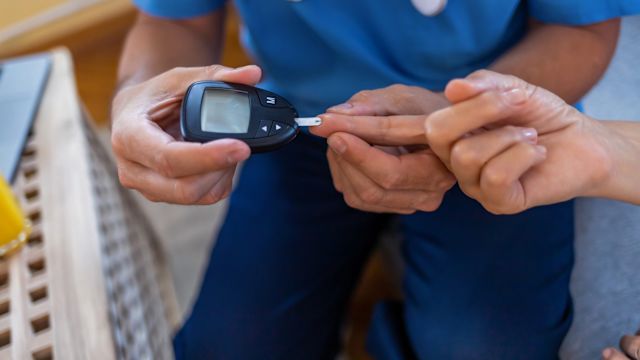Updated on October 17, 2024.
The liver is a vital organ located in the upper right side of the abdomen. It is the largest solid organ in the body and at any given moment, it holds about 13 percent of the body’s total blood supply.
The liver performs hundreds of vital functions related to keeping the blood healthy. A few of these hundreds of vital functions include:
- Filtering out excess blood glucose, waste products, bacteria, drugs (such as medications), and toxins (such as alcohol).
- Producing bile, a substance the body needs to digest fats and remove wastes from the blood and intestines.
- Regulating the amounts of clotting factors and amino acids (building blocks for proteins).
- Storing many different vitamins and minerals.
Again, these are a few of the hundreds of vital functions the liver performs. Any disease that affects the liver can have serious consequences to a person’s health.
What is MASLD?
One of the most common liver diseases in the United States is metabolic dysfunction-associated steatotic liver disease (MASLD). This condition is formerly known as non-alcoholic fatty liver disease (NAFLD), and this term is still used in some literature about the condition.
MASLD is a group of health conditions where fat deposits accumulate in the liver. This causes the liver to become swollen and damaged, which will impair the organ’s ability to perform the vital functions described above.
MASLD can lead to a number of serious (potentially life-threatening) complications, including cardiovascular disease, liver cancer, cirrhosis (severe scarring in the liver), and end-stage liver disease.
What are the different types of MASLD?
There are two main types of MASLD:
- Hepatic steatosis. Hepatic refers to the liver and steatosis is a medical term for fat buildup in an organ. This is the milder form of MASLD. With this type, there are fat deposits in the liver, but there is no inflammation or scar tissue in the liver. Hepatic steatosis is also known as simple fatty infiltration, and formerly known as non-alcoholic fatty liver (NAFL).
- Metabolic dysfunction-associated steatohepatitis (MASH). Formerly known as nonalcoholic steatohepatitis (NASH), this is the more severe form of MASLD. With MASH, inflammation in the liver damages cells, which can lead to fibrosis (the replacement of healthy tissue with scar tissue). Sometimes, hepatic steatosis will progress into MASH.
What causes MASLD?
Factors that can contribute to MASLD include obesity, insulin resistance, diabetes, high blood pressure (hypertension), and unhealthy cholesterol levels. Genetics also appear to play a role, and there is evidence that some people have a genetic predisposition to MASLD. People who have a family member with MASLD are at a greater risk of having the condition.
Who can be diagnosed with MASLD?
In order to be diagnosed with MASLD, a person must have hepatic steatosis and at least one of the following risk factors:
- Be overweight or obese
- Have elevated blood glucose levels or type 2 diabetes
- Have hypertension (high blood pressure)
- Have elevated triglycerides or be on a cholesterol-lowering medication
- Have unhealthy cholesterol levels or be on a cholesterol-lowering medication
Your best source of information will be a healthcare provider. A healthcare provider can explain the tests and exams needed to determine these risk factors.
How does alcohol affect MASLD?
Liver disease can also occur as a complication of heavy alcohol consumption. This is a separate category of liver disease, called MetALD (pronounced “met A-L-D”). Alcohol consumption can worsen MASLD, and people with the condition are advised to avoid or minimize alcohol use.
What are the symptoms of MASLD?
Some people with MASLD may experience fatigue, feel generally unwell, or have abdominal pain in the area where the liver is located. But most people who have MASLD do not experience any symptoms or noticeable symptoms until the disease has progressed and the liver is significantly damaged. These symptoms can include weakness, loss of appetite, yellowing of the skin (jaundice), skin itching, fluid buildup in the legs and abdomen, bleeding in the GI tract, and mental confusion.
What is the treatment for MASLD?
Treatment for MASLD includes weight loss, changes to diet and lifestyle, and treating co-existing medical conditions (such as diabetes and high cholesterol). People with MASLD should work with a healthcare provider to develop a plan for lifestyle changes, weight loss, and other aspects of treatment.
There is also an oral medication approved in 2024 to improve liver fibrosis in people who have MASLD who have not developed cirrhosis. This oral medication is meant to be used alongside diet and exercise.







